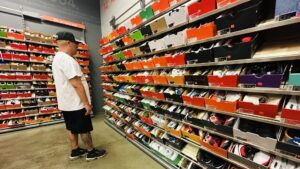Understanding the Real Cost of Tariffs: An Insight from Extreme Investor Network
As global markets continue to evolve, one pressing question looms large: What is the true cost of tariffs? While political debates often cloud the issue, we must rely on data-driven insights to understand how these levies can affect our purchasing power. Here at Extreme Investor Network, we delve deeper into these complexities, offering you unique insights and the information you need to navigate this economic landscape.
The Growing Impact of Tariffs
Tariffs, in their simplest form, are taxes imposed on imported goods. While they aim to protect domestic industries, the reality is that consumers often bear the brunt of these costs. Recent analyses suggest that if President Trump’s various tariff proposals were enacted, consumers would see significant price hikes on everyday items.
For instance, retail consultancy AlixPartners conducted a detailed analysis for CNBC, examining the implications of tariffs on essential products like men’s sweaters and shoes sourced from China and Vietnam. The findings were startling: under the current 30% tariff, prices could skyrocket by as much as 19%. Should the proposed 145% tariff be implemented, those price tags for a sweater and shoes could surge by approximately 90%.
Analyzing Cost Structures
To illustrate this, let’s break down the costs. A 100% cotton men’s sweater from China, before tariffs, has a production cost of about $6.80. When accounting for existing tariffs and logistics, the total cost rises to around $10.57, resulting in a retail price of approximately $30.
However, with a 30% tariff, that retail price could jump to about $35.79. A staggering 145% tariff would see prices climb to $57.97. Similarly, a pair of shoes made in Vietnam that starts at a production cost of $29.50 would see prices rise from $95 to $102.42 with current tariffs — an 8% increase — and could reach $129.14 under proposed tariffs.
Retailer Strategies: Protecting Consumers & Profit Margins
While these models provide a stark preview of potential price increases, it’s essential to recognize that retailers are not merely passive actors in this scenario. Many are actively employing strategies to mitigate the impact of tariffs on consumers. For instance:
- Manufacturing Relocation: Companies may consider shifting production to countries with lower tariffs, although this approach often requires significant time and investment.
- Product Adjustments: Retailers might alter their product lines or adjust features to keep prices manageable.
- Cost Absorption: Some retailers, like Target, have indicated they will explore every option before raising prices, demonstrating a commitment to maintaining consumer trust.
Broader Economic Implications
The implications of tariffs extend beyond the individual consumer. As noted by various economic models, shared tariff costs between retailers and consumers can lead to job losses and declining GDP. As corporate giants like Walmart and Lowe’s already acknowledge, absorbing the entire cost is increasingly challenging, prompting a "portfolio approach" to pricing where costs may shift to products less sensitive to consumer scrutiny.
Conclusion: Navigating the Economic Landscape
Understanding tariffs’ true costs is crucial for informed investing and spending. As a valued reader of Extreme Investor Network, we encourage you to stay informed about these developments and consider their broader economic implications. By understanding how tariffs impact pricing and consumer behavior, you can make better financial decisions, whether you’re shopping or investing.
Stay tuned for more insights and strategies from Extreme Investor Network, where we empower you to navigate the complexities of today’s economic landscape with confidence.

